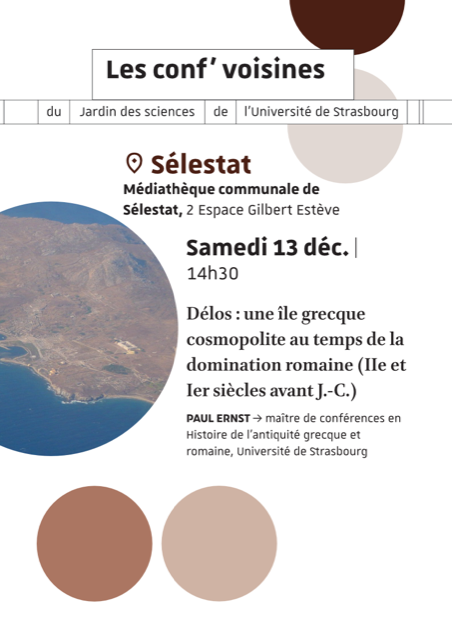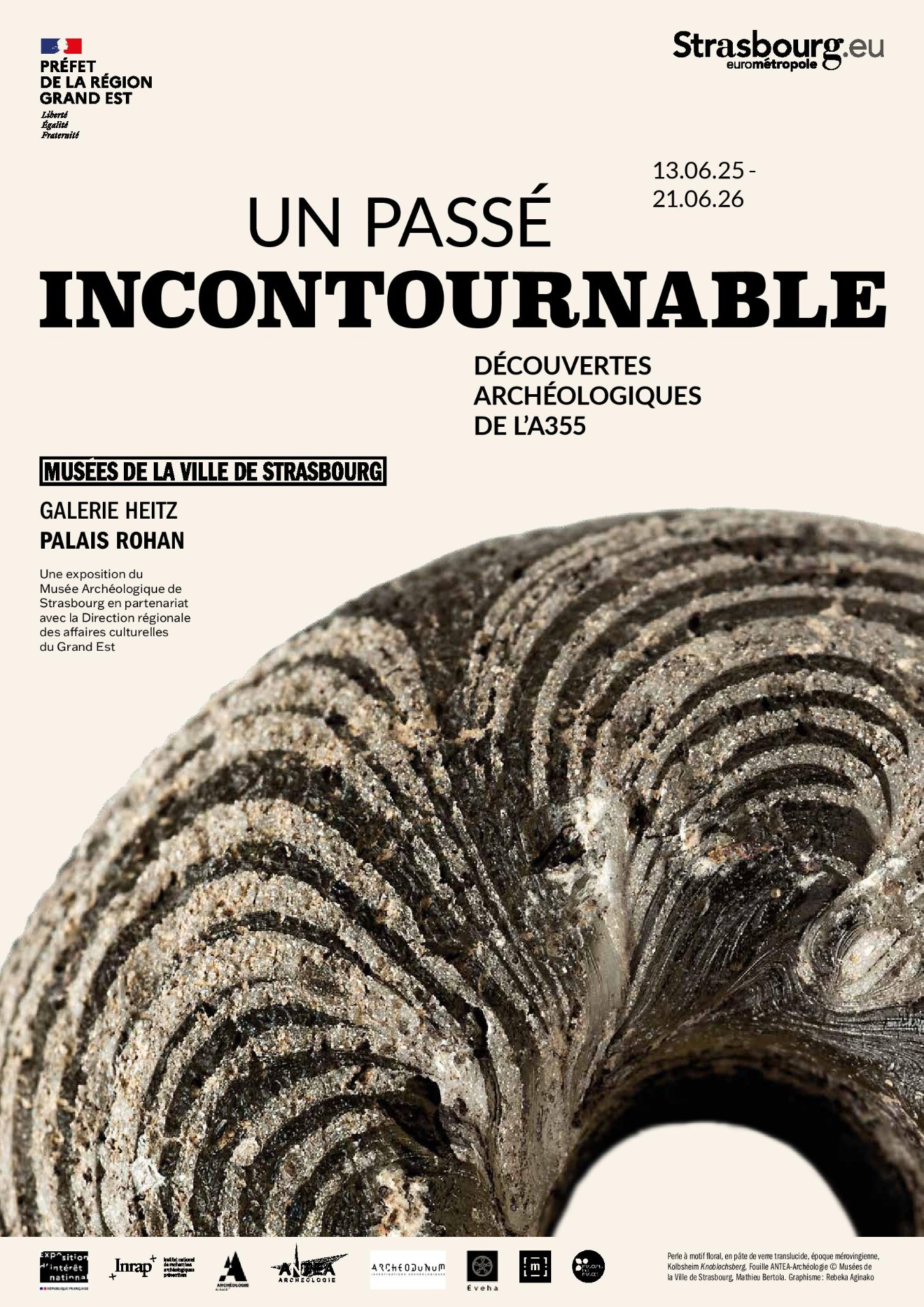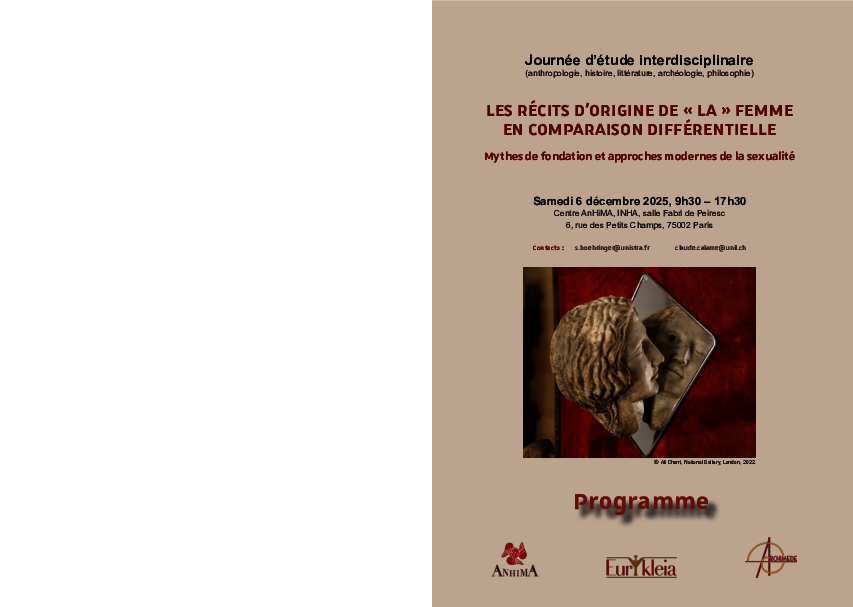Presentation
The Archaeology and Ancient History in the Mediterranean Area joint research unit (Archéologie et histoire ancienne: Méditerranée Europe – ArcHiMèdE) brings together researchers from the French National Centre for Scientific Research (Centre national de la recherche scientifique – CNRS), teacher-researchers from the University of Strasbourg (Unistra) and the Université de Haute-Alsace (UHA), archaeologists from the French Ministry of Culture and preventive archaeology specialists (Inrap, Archéologie Alsace, Antea archéologie, GéoArchéOn). It enjoys a privileged strategic location at the heart of Europe, which enables it to participate in major cross-border networks (Collegium Beatus Rhenanus, Franco-German Doctoral College) and to attract new partnerships. The UMR has an exceptional wealth of scientific resources, with its own research library at the Alsace Interuniversity House for the Social Sciences and Humanities (Maison interuniversitaire des sciences de l'Homme - Alsace (Misha) and a number of cultural heritage collections (Egyptian and Greco-Roman antiquities, numismatics, casts of ancient works, old photographs, including glass plates). It is also working on the publication of the Strasbourg National University Library's (Bibliothèque Nationale Universitaire de Strasbourg – BNUS) ancient collections (cuneiform tablets, papyri, ostraka). There is also the Zoological Museum's (Musée Zoologique) bone collection, which houses the bones of most of the mammals likely to be found in archaeological sites from the Mesolithic to the contemporary period in temperate Europe.
Finally, the UMR also oversees several collections (Études d'archéologie et d'histoire ancienne, Cahiers de la bibliothèque copte, Collegium Beatus Rhenanus) and journals (Archimède. Archéologie et histoire ancienne, in open access, Bulletin Analytique d'Histoire Romaine, Ktèma, and Les Chroniques d'Archimède, which, in open access, showcase the UMR's recent work).
Since January 2021, the UMR has been responsible for the History, Sociology, Archaeology & Anthropology of Religions (HiSAAR) Interdisciplinary Thematic Institute (ITI) and has participated in the Centre for Research and Experimentation on the Artistic Act (Centre de recherche et d'expérimentation sur l'acte artistique – CREAA) ITI.
Research Topics
Team 1: Eastern Territories and Empires (TEO)
Director: Philippe Quenet
The team combines the skills of complementary disciplinary fields - the Ancient Orient, Egyptology, Coptology, papyrology, studies on the Byzantine world and medieval Arab-Muslim cultures, and the Indian and Iranian worlds - along 3 main lines:
- Topic 1: Contextual archaeology, from the acquisition to the publication of excavation data
- Topic 2: Study and publication of unpublished objects and texts
- Topic 3: History and historical anthropology
Team 2: History and archaeology of the Greek and Roman worlds
Director Julien Fournier
Team 2 brings together historians and archaeologists specialising in the Greek and Roman worlds from the Bronze Age to Late Antiquity in 3 main topics:
- Topic 1: Civic spaces and institutions
- Topic 2: Models and practices of power
- Topic 3: Social, cultural and anthropological history of ancient societies
Team 3: Prehistory of Middle Europe
Director: Philippe Lefranc
Team 3 brings together archaeologists of prehistory, whose activities fall under 3 main topics:
- Topic 1: Management of territories and resources during prehistory
- Topic 2: Mortuary practices in the southern Upper Rhine plain from the Mesolithic to the very end of the Neolithic
- Topic 3: Human/animal relationships
Team 4: Central-European and Rhine Archaeology (AMER)
Director: Clément Féliu
Team 4 brings together archaeologists specialising in the Protohistory of Central Europe and the so-called "Gallo-Roman" period up to the Early Middle Ages, under 4 topics:
- Topic 1: Walls and fortifications
- Topic 2: Productions and material culture
- Topic 3: Funerals in the Upper Rhine plain
- Topic 4: Habitats and territories
Cross-disciplinary programmes
- Archives and heritage collections (directors: Marie Stahl and Sylvain Perrot)
- The body, from its embellishment to mortuary treatments (directors: Éric Boës and Véronique Pitchon)
- From analogue to digital, practices and methodologies (director: Philippe Quenet)
Major events and works
Major events and works (2019-2024 selection)
- G. Ducœur, Les mythes du déluge de l'Inde ancienne : histoire d'un comparatisme sémitico-indien, Louvain-la-Neuve, 2019
- J. Fournier, Corpus des inscriptions de Thasos V. Documents publics d'époque romaine, Athènes, 2023
- E. Garel, Héritage et transmission dans le monachisme égyptien : les testaments des supérieurs du topos de Saint-Phoibammôn à Thèbes (P.Mon.Phoib.Test.), Le Caire, 2020
- C. Bur, M. Humm (éd.), Caton l'Ancien et l'hellénisme. Images, traditions et réception, Paris, 2021
- S. Fichtl, De la ferme à la ville. L'habitat à la fin de l'âge du Fer en Europe celtique, Paris, 2021
- P. Lefranc, A. Denaire, R.-M. Arbogast, C. Croutsch, É. Guthmann, B. Perrin, Les enceintes néolithiques à pseudo-fossé, Paris, 2019
- D. Lenfant (éd.), Les aventures d'un pamphlet antidémocratique : transmission et réception de la Constitution des Athéniens du Pseudo-Xénophon, Ve siècle avant J.-C.-XXIe siècle, Paris, 2020
- S. Perrot, S. Emerit, A. Vincent (éd.), De la cacophonie à la musique. La lexicographie des sons dans les sociétés antiques, Le Caire, 2022
- Pollini, A. Esposito (éd.), Cités nouvelles, villes des marges. Fondations, formes urbaines, espaces ruraux et frontières de l'archaïsme à l'Empire, Pise, 2024
- Vanderheyde, La sculpture byzantine du IXe au XVe siècle : contexte, mise en œuvre, décors, Paris, 2020
Recognition and distinctions (2019-2024)
- 2024: Nourane Ben Azzouna, USIAS fellowship
- 2024: Nicola Cucuzza, USIAS fellowship (at the invitation of Daniela Lefèvre-Novaro)
- 2022-2024: Frédéric Colin, USIAS chaire Marc Bloch de Sciences Humaines et Sociales
- 2022: Sylvain Perrot, Prix Ourisson of the Cercle Gutenberg
- 2021: Esther Garel, CNRS Bronze Medal
- 2021: Jean-Philippe Droux, prix « Expertises recherche » de l'Unistra
- 2021: Sylvain Perrot, prix Sacem du meilleur documentaire musical (pour « À la recherche de la musique de l’Antiquité », de Bernard George)
- 2020: Pierfrancesco Morena's Chaire Gutenberg (at the invitation of Olivier Huck)
- 2020: Sandra Boehringer, Rehak Award (Lambda Classical Caucus, Congress of the Society of Classical Studies)
- 2020: Maria Teresa Schettino, chevalier de l'ordre National du Mérite
- 2019: Sarah Dermech, prix de thèse Martin Bucer du Chapitre de Saint-Thomas, Strasbourg
Digital tools and platforms
The ArcHiMèdE UMR is firmly committed to digital humanities and is developing several databases (such as BAHR, PPRET and RIMAnt) as well as 2 GIS (Geographic Information System) type platforms: ArkeoGIS, an aggregator of archaeological and geographical databases that enables information from inventory and research databases to be displayed on different map backgrounds, and ArkeOpen, an open access interface based on the FAIR principles of open science, enabling data from the Cortecs-accredited ArkeoGIS platform to be consulted.
This is complemented by the Service d'ANalyse des formes ARCHItecturales et Spatiales (AnArchiS) service, which provides expertise in implementing architectural and geographic analysis methods and techniques applicable to various types of projects.





